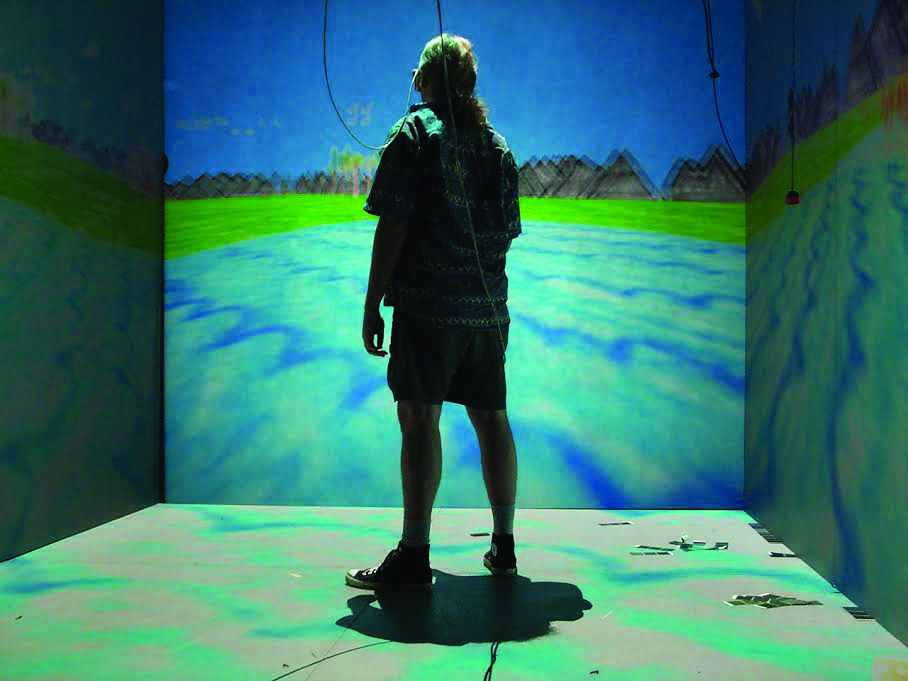Most people know someone with autism, whether it be a sibling, a close friend, or an acquaintance. The Center for Disease Control’s 2014 census found that one in fifty-nine children living in the US has autism—more than double the number at the start of the century. Part of this increase can be attributed to advances in technologies that provide better screening and early diagnosis for autism. The growing understanding of the prevalence of autism spectrum disorder provides a strong impetus for research to help understand and treat the condition.
Autism spectrum disorder (ASD) is characterized by behavioral and communication challenges, an inability to discern emotions, and learning disabilities. Furthermore, children diagnosed with autism often suffer from anxiety. The most common type of anxiety associated with ASD is specific phobia, an irrational fear of a specific object or situation. A severe specific phobia of an everyday object can make ASD extremely debilitating. Cognitive behavioral therapy (CBT) is a common approach used to overcome negative thoughts and behaviors associated with phobias; however, specific phobias in those diagnosed with ASD require different treatment. Jeremy Parr, professor of pediatric neurodisability at Newcastle University, has recently led a research initiative that tested the efficacy of virtual reality in conjunction with CBT to treat specific phobias in children with ASD—with noteworthy results.
Virtual reality is a relatively new technology with great promise for treating ASD. If it can be imagined, it can be produced digitally. Parr’s team incorporated virtual reality into their experimental design by utilizing a Blue Room, a fully immersive virtual reality environment that does not require goggles or headsets, allowing safety, control, and repetition. They were able to develop personalized anxiety management techniques throughout the virtual reality process, which will ultimately support long-term solutions. Participants in the study sat on a couch in the center of the Blue Room with a therapist, who could fully control the environment with an iPad. Specific scenes were designed to match the phobias of the participants along with general relaxation scenes for when anxiety became too challenging to remain in the phobic scenes. While in the blue room, simplified CBT techniques were practiced, such as identifying feelings, imagining a “feeling thermometer” to describe the anxiety, conducting relaxation exercises, and thinking positive coping statements.
There were thirty-two participants in total, aged eight to fourteen, and half of them were treated with the Blue Room while the other half constituted the control group. The control group did not experience the Blue Room until six months after the experimental group did. Treatment included four, twenty-minute sessions in the Blue Room. The level of exposure to the phobia increased over time within the scenes. For example, for a specific phobia of dogs, the initial scene may be a quiet dog on a leash in the distance. This may escalate to a dog on the loose close enough to pet. Following treatment, short descriptions of the children’s current phobia statuses were recorded based on the parents’ accounts two weeks, six months, and twelve months after the treatment to determine if behavior had changed.
The overall results of Parr’s study support the claim that virtual reality serves as an effective technique for treating specific phobia in children with ASD. One-third of the children in the treatment group demonstrated improvement in their phobias outside the Blue Room, in contrast to the control group, which showed no marked improvements when waiting for treatment. Additionally, five children in the control group showed devaluation from baseline behavior while only one child in the treatment group did. When the control group was later treated in the Blue Room, they showed similar results to the initial treatment group.
Future research will focus on exploring which factors are associated with the “non-responders” in an effort to maximize treatment efficacy and reliability. Additionally, a comparison of the efficacy of CBT alone with CBT supplemented with virtual reality would more directly assess the effectiveness of virtual reality. In future studies, observations of progress may also be made by blind assessors to minimize parental bias. Parr’s study has launched a novel approach to the treatment of autistic symptoms, which may allow children with autism to overcome their phobias and assume their full potential.

